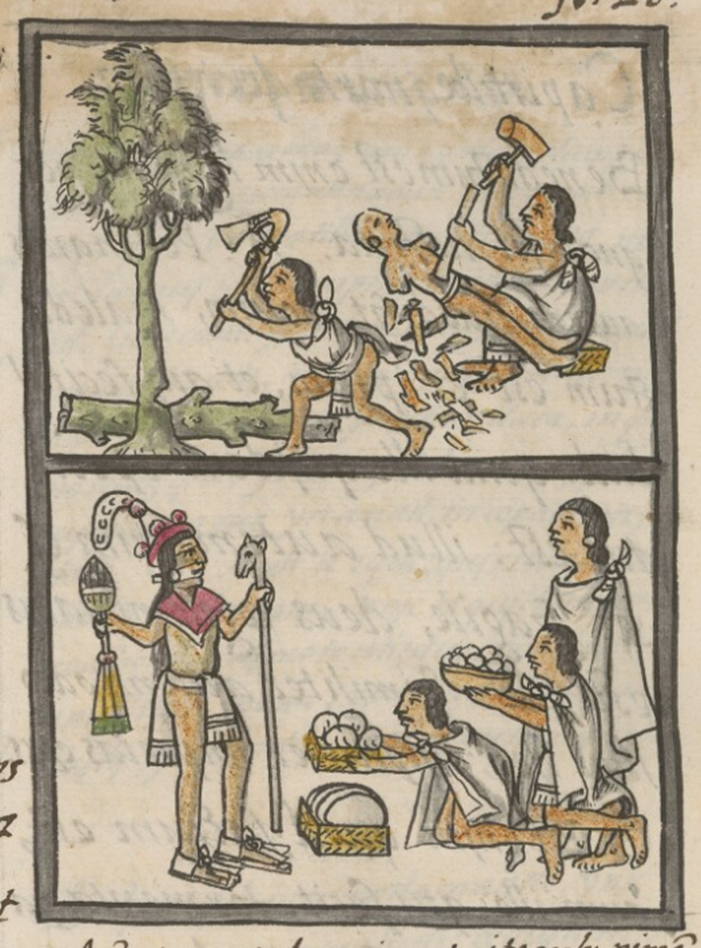Date/Time
Monday, November 18, 2024
3:00 pm PST – 4:00 pm PST

Presented by Chase Caldwell Smith, PhD Candidate, University of California, Los Angeles
Hosted by the Early Modern Research Group
Online event via Zoom
To register, please fill out the form below.
The Florentine Codex is best known as a rich sixteenth-century repository of information – in text and image – of Nahua culture, society, and religion. However, one passage in the manuscript, the appendix to the first book, “The Gods,” offers an extended distinct perspective. This section attempts to translate the Abrahamic concept of “idolatry”, as expressed through several chapters from the Book of Wisdom in the Christian Old Testament, into Nahuatl linguistically, conceptually, and visually. This paper examines the complexities of this “translation” effort by the Franciscan friar Bernardino de Sahagún and the Nahua tlacuiloque (painter-scribes) who were central in the production of the manuscript. Drawing inspiration from Kevin Terraciano’s theorization of the “three texts” of the Florentine Codex – which foregrounds the interrelationships and discrepancies between the Spanish text, the Nahuatl text, and the images – Smith examines how the Latin Vulgate passages were interpreted and transformed in an effort to define and localize the concept of idolatry in this specific cultural context.
Chase Caldwell Smith is a PhD candidate in History at UCLA, where he studies religious conversion and religious change in sixteenth- and seventeenth-century central Mexico through sources including Nahuatl-language doctrinal literature, inquisitorial investigations, and religious images. In addition to a Summer Mentorship from the UCLA Center for 17th- and 18th-Century Studies, his research and training have been supported by institutions including the UCLA History Department, the UCLA Latin American Institute, the UCLA CMRS Center for Early Global Studies, Dumbarton Oaks, the California Rare Books School, the Conference on Latin American History, the Bancroft Library, and Princeton University Library. Beyond his studies, he serves as an officer of the UCLA Medieval & Early Modern Student Association and has co-organized graduate student conferences on materiality, borders and borderlands, and intersectionality in the early global world.
Image: “Cuauhxinqueh” (wood carvers) and “Tlamana” (to make an offering), Book 1, Folio 26r, The Digital Florentine Codex. https://florentinecodex.getty.edu/book/1/folio/26r/images/f30117d5-3e58-4893-ac4b-b4fed1ce632a

